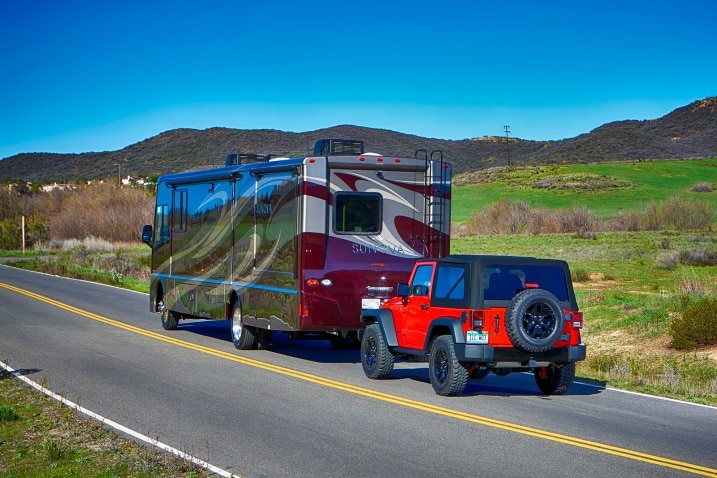Other must-know flat-towing tips
Dinghy towing makes things easier once you've arrived at your destination, but it can add work before and during the journey.
Some cars and SUVs that can be towed four-down require special stops to run the engine in order to lubricate the transmission. Some require removal of various fuses before starting off. There are a number of four-wheel-drive trucks with automatic transmissions that must be towed four-down with their transmissions in the park position and their transfer cases in neutral.
Vehicles with steering locks triggered by the ignition switch — and that's most of them — can't be flat-towed if the front wheels won't turn. The key must be in the ignition and the ignition switched to the accessory position in order to unlock the steering.
Don't assume that because previous model years were towable, this year's will be as well. For example, the second-generation Ford Escape was a popular dinghy-tow vehicle with the RV crowd. But if you're looking at the current fourth-generation model, only the hybrid and plug-in hybrid models are towable.
Finally, the vast majority of states require most vehicles being flat-towed to be equipped with auxiliary brake systems that work in tandem with the motorhome's brakes. That's because flat-towed vehicles almost always exceed the various states' minimum towing weight requirements. Smart motorhome owners who tow a car or truck know that even in those states that don't require them, auxiliary brake kits should be considered essential for safety.
Never reverse while flat towing
Though it may be tempting to reverse while flat towing with a car or truck behind your RV, you should never do this. Reversing can damage your tow bar, your car/truck and your RV. Even if you plan on backing up perfectly straight, there is a chance you can misalign your car and the RV and the result will be damage to either or both of your vehicles. If you want to back up your RV, disconnect first.
When in doubt, check the manual
Once you think you've found a vehicle that will suit you, the best next step is to refer to the owner's manual. Often you can find the manual online.
Everything you'll need to know about pulling the car or truck dinghy-style will be in the manual, including detailed instructions on which fuses to pull (if any), the proper position for the transmission shift lever, which switches to leave on and which to turn off, and how often to run the engine for lubrication.
While you can probably make almost any vehicle four-down-towable with aftermarket equipment, you're better off using cars and trucks that are manufacturer-certified for the job.



 by
by 